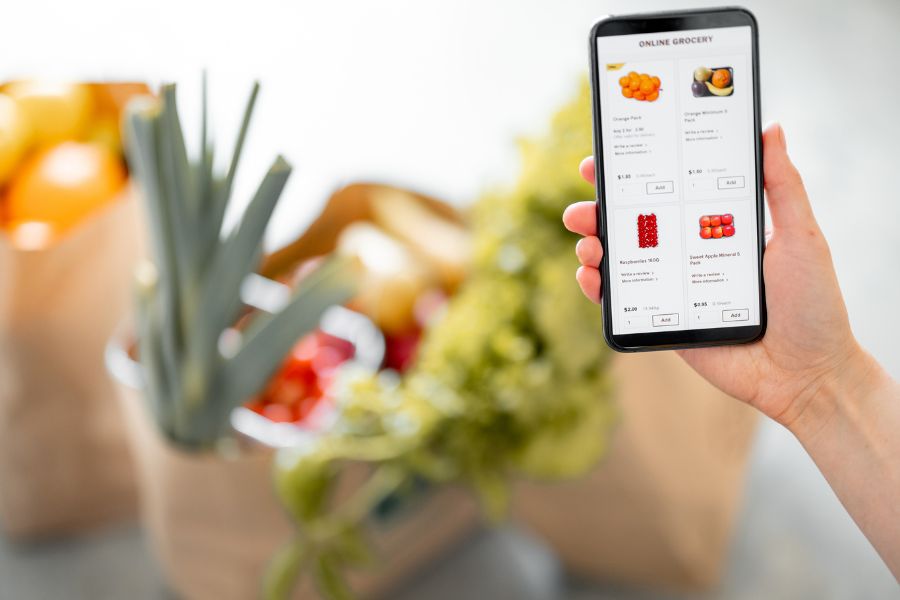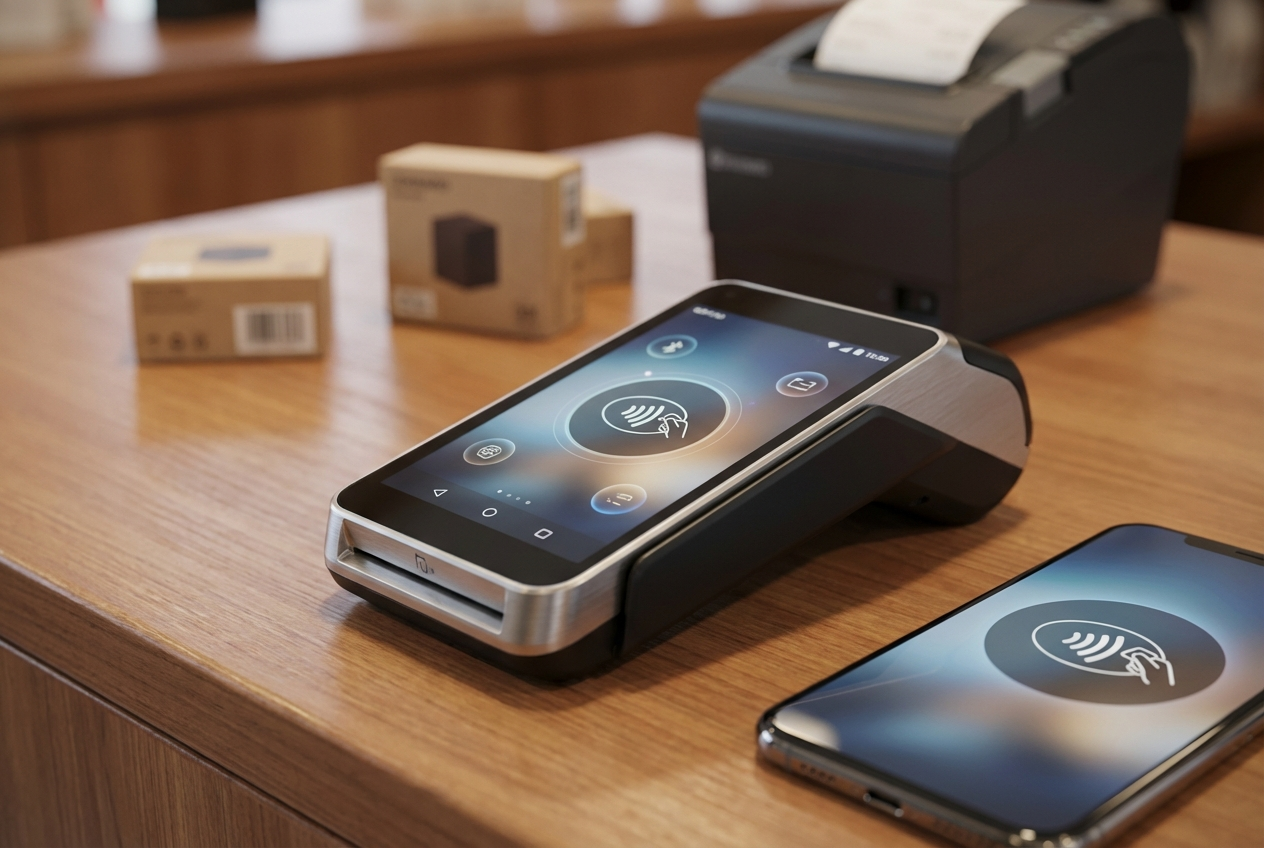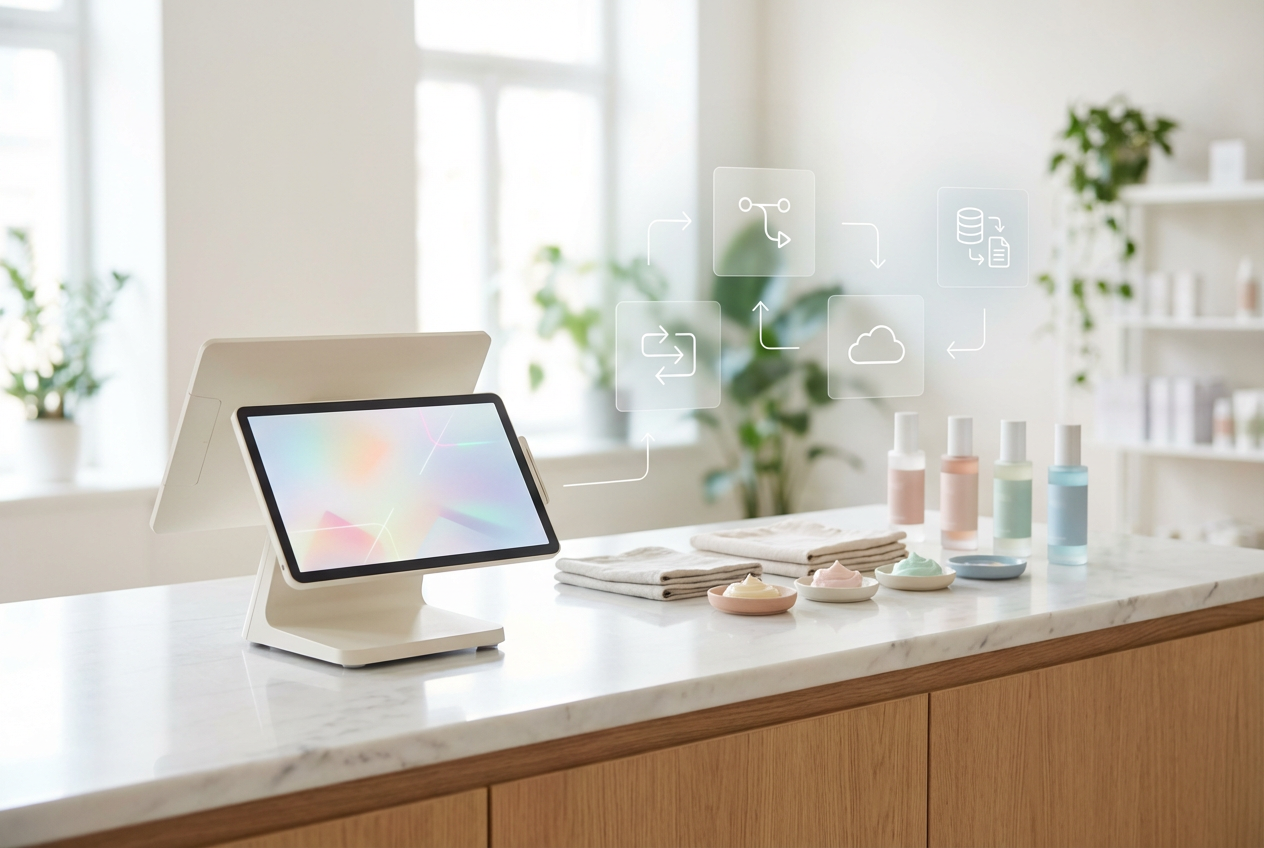Retailers today face an undeniable challenge: disconnected systems. When your POS and eCommerce platforms don’t communicate, inefficiencies pile up. Inventory issues become common, customer experiences suffer, and scaling operations feels like an uphill battle. These gaps can seriously disadvantage businesses, especially in 2025’s competitive retail landscape. The solution? Retail POS eCommerce integrations. These tools unify inventory, sales data, and customer insights into a single, efficient framework. They also simplify payment processes and improve operational workflows. In this article, we’ll explore the most reliable integrations that can transform how you do business, helping you thrive in 2025.
Highlight:
- Connecting POS systems with ecommerce platforms will simplify operations and elevate customer experiences across all channels in 2025.
- Retailers will need tools like real-time inventory updates, mobile POS, loyalty programs, and multi-store controls to remain competitive.
Benefits of Integrating POS and Ecommerce Systems
There are many benefits to a seamless connection between physical and digital sales channels. It offers retailers a powerful tool to manage operations more effectively, improve customer satisfaction, and drive business growth.
Let’s take a closer look at how this integration can reshape your business.
Unified Operations Across Sales Channels
Disconnected systems often lead to duplicate efforts and costly mistakes. A POS and eCommerce integration eliminates this by consolidating inventory, sales, and customer data into one platform.
For example, if an item sells online, the system automatically updates inventory levels in real time across all digital and in-store sales channels. This means you no longer need to manually reconcile stock levels or worry about overselling.
The benefits extend to your customers. Shoppers can trust that the product they see online is in stock, whether buying it for delivery or picking it up in-store. This level of accuracy not only improves backend efficiency but also builds customer confidence in your brand.
Improved Customer Experience
Your customers would expect a seamless experience, regardless of where they are shopping. Integration makes this possible by connecting every touchpoint in the customer journey.
Take a few examples:
- Shoppers can place an order online and pick it up in-store (BOPIS), reducing wait times and friction.
- Flexible payment methods, such as paying online and completing the transaction in-store, become easy to implement.
- Loyalty programs can span all channels, rewarding customers for every purchase they make.
With personalized recommendations, faster checkout processes, and smoother returns, customers feel valued. These small but impactful features foster trust and keep shoppers coming back.
Actionable Sales Insights
Integration provides businesses with centralized access to in-store and online sales data. This gives you a clearer picture of performance, hence better business decisions for the future.
►►► Optimal solution set for businesses: Multi store POS, Next-gen POS, Inventory Management Software (MSI), Self Service, Automation, Backorders
For instance, you can quickly identify top-selling products, track customer preferences, and monitor the success of marketing campaigns. These insights allow you to fine-tune your strategies. You can adjust inventory levels, improve your product mix, and craft personalized marketing messages that resonate with your audience. The result is better resource allocation and increased profitability.
Greater Efficiency, Fewer Errors
Manually tracking inventory, sales, and customer data takes time. It’s also prone to mistakes that can disrupt operations. Integration automates these processes, reducing human errors and saving valuable time.
For your team, this means less time spent on administrative tasks and more time focused on what truly matters—serving your customers. Automation also ensures that operations run smoothly, even during busy periods like holidays or sales events.
Top 5 Retail POS Systems for Ecommerce Integration in 2025
In this section, we’ve outlined the top 5 retail POS systems, emphasizing why they stand out as the best ecommerce integration tools for 2025.
ConnectPOS
ConnectPOS has firmly established itself as a top-tier solution for retailers seeking seamless retail POS ecommerce integration. Designed with modern omnichannel challenges in mind, this cloud-based system integrates effortlessly with major eCommerce platforms like Shopify, Magento, WooCommerce, and BigCommerce.
This system is built to synchronize operations across online and offline channels in real-time. Retailers benefit from streamlined workflows, accurate inventory tracking, and an omnichannel experience that keeps customers satisfied.
Main features:
- Real-Time Synchronization: Inventory, orders, and customer data are updated instantly across all touchpoints. This eliminates discrepancies between in-store and online stock levels, ensuring accurate product availability and preventing overselling.
- BOPIS Functionality: Supports buy-online-pick-up-in-store services, a must-have for retailers looking to meet customer demands for flexibility.
- Mobile POS Functionality: Retailers can process sales and manage inventory on the go using mobile devices such as tablets and smartphones. This feature is especially useful for pop-up shops, trade shows, or in-store flexibility.
- Customizable Loyalty Program and Promotions: Build and manage customized loyalty programs to reward repeat customers. Points, discounts, and special promotions can be integrated seamlessly across both online and offline channels, driving customer retention and boosting sales.
- Wide Payment Gateway Compatibility: Works with multiple payment options, including PayPal, Stripe, and local gateways, ensuring versatility in checkout processes.
- Advanced Analytics: Provides detailed sales and inventory reports, giving retailers actionable insights to refine strategies and boost profitability.
- Multi-Device Compatibility: Operates across desktops, tablets, and mobile devices, offering flexibility for varying retail setups.
- Multi-Store Management: Ideal for retailers operating multiple locations, ConnectPOS centralizes inventory, sales, and customer data across all stores.
It’s ideal for retailers focused on delivering a seamless omnichannel experience. Its scalability and flexibility make it a popular choice for businesses of all sizes.
Square POS
Square POS is an excellent choice for small to medium-sized businesses, offering a cost-effective yet feature-rich solution. While it caters to general retail needs, Square also excels with its appointment-focused POS system, designed for service-based businesses such as salons and spas.
Main features:
- Online Booking System: Enables clients to conveniently schedule appointments online.
- Free Booking Website: Offers a cost-free platform where clients can book services with ease.
- Client Loyalty Programs: Helps foster repeat business by rewarding loyal customers with incentives.
- No-Show and Cancellation Fees: Allows businesses to charge fees for missed appointments or last-minute cancellations.
- Automated Appointment Reminders: Sends timely reminders to clients, reducing the likelihood of no-shows.
- Mobile Appointment Management: Empowers businesses to manage appointments anytime, anywhere using a mobile app.
Square POS delivers a versatile solution that integrates seamlessly with eCommerce platforms while remaining affordable. Its specialized features for service-focused businesses put it ahead in its niche.
Shopify POS
For retailers already using Shopify as their eCommerce platform, Shopify POS is a natural choice. Its tight integration with the Shopify ecosystem ensures a seamless connection between online and offline operations, making it one of the most efficient solutions for omnichannel retailers.
Main features:
- Omnichannel Sales: Offer your products seamlessly across various channels, including physical stores, social media platforms, and your website.
- Retail Analytics: Gain access to comprehensive reports and real-time insights into your business performance, enabling smarter, data-driven decisions.
- Staff Management: Oversee employee roles, monitor performance, and set detailed access permissions to safeguard sensitive information.
- Inventory Management: Monitor stock levels across all sales channels, receive alerts for low inventory, and conduct inventory counts—all from one centralized platform.
Shopify POS is tailor-made for businesses already operating within the Shopify ecosystem. Its ease of integration and user-friendly interface make it a go-to solution for retailers who want a unified retail experience with minimal technical setup.
Lightspeed
Lightspeed is a powerful POS system for mid-sized to large retailers with complex needs. It integrates smoothly with platforms like Shopify and WooCommerce, offering sophisticated tools for managing inventory, sales, and customer relationships.
Main features:
- Multi-Location Management: Simplifies operations across multiple stores by providing centralized inventory and sales data.
- Advanced Reporting: Tracks employee performance, sales trends, and customer data to empower data-driven decision-making.
- Custom Workflow Creation: Allows retailers to build tailored workflows for promotions, inventory restocking, and customer engagement.
- CRM Integration: Strengthens customer loyalty with tools for personalized marketing and engagement.
Lightspeed’s scalability and advanced capabilities make it a top choice for businesses managing complex operations or multiple locations.
Toast POS
Toast POS stands out as the leading solution for food and beverage businesses. Designed specifically for restaurants, cafes, and food retailers, it integrates online and in-person orders seamlessly, making it indispensable for businesses with an ecommerce component.
Main features:
- Delivery Platform Integration: Connects with services like Uber Eats and DoorDash to manage online orders effortlessly.
- Real-Time Menu Updates: Allows businesses to update their menus instantly across all channels.
- Detailed Analytics: Tracks food costs, sales performance, and customer preferences to help businesses optimize their operations.
- Contactless Payments: Supports modern payment methods, improving convenience for customers and speed of service.
Toast POS is tailor-made for the food industry, offering specialized features that cater directly to the needs of restaurants and cafes.
Future Trends in Retail POS and eCommerce Integrations
As retail and eCommerce continue to evolve, several key trends are shaping the future of POS systems and their integration with online platforms.
- AI-Driven Insights: Artificial intelligence is becoming increasingly important in retail POS ecommerce integration, offering businesses predictive analytics to forecast trends and customer behaviors. By analyzing past purchasing patterns, AI can help retailers understand customer preferences, optimize inventory, and tailor marketing strategies for improved sales and customer engagement.
- Deeper Integration with Sustainability Tracking Tools: With growing demand for sustainability, retailers are integrating tracking tools into their POS systems to monitor environmental impact. This includes tracking product sourcing, waste reduction, and carbon emissions, allowing businesses to provide transparency to consumers and meet sustainability goals more effectively.
- Expanded Role of Social Commerce: Social media platforms are becoming more integrated with eCommerce, and retail POS systems are adapting to support this shift. Social commerce allows customers to make purchases directly through social media channels like Instagram and Facebook, bridging the gap between browsing and buying. As more consumers engage with brands through these platforms, POS systems will increasingly need to support seamless transactions from social channels.
These trends highlight the importance of technology and integration in creating seamless, personalized, and socially responsible shopping experiences.
FAQs: Retail POS Ecommerce Integration
- Can I integrate an existing POS system with my ecommerce store?
Yes, many POS systems offer integration options with various ecommerce platforms, allowing seamless synchronization of sales and inventory.
- What are the costs associated with these integrations?
Costs vary depending on the POS system, ecommerce platform, and integration complexity, including setup, monthly fees, and transaction costs.
- How do integrations help with omnichannel marketing?
Integrations streamline data sharing across platforms, enabling personalized marketing, consistent messaging, and improved customer experience across all channels.
Conclusion
In sum, retail POS ecommerce integration is the answer to streamline operations, enhance customer experiences, and drive growth in 2025. With unifying online and offline operations, retailers can streamline processes, enhance customer experiences, and gain actionable insights to drive growth.
Ready to take your business to the next level? ConnectPOS offers the tools and expertise to help you achieve seamless integration and maximize your potential. Contact us to discover how their cutting-edge solutions can transform your retail operations.
►►► Optimal solution set for businesses: Shopify POS, Magento POS, BigCommerce POS, WooCommerce POS, NetSuite POS, E-Commerce POS



